Copyright @ Andrew McIntosh
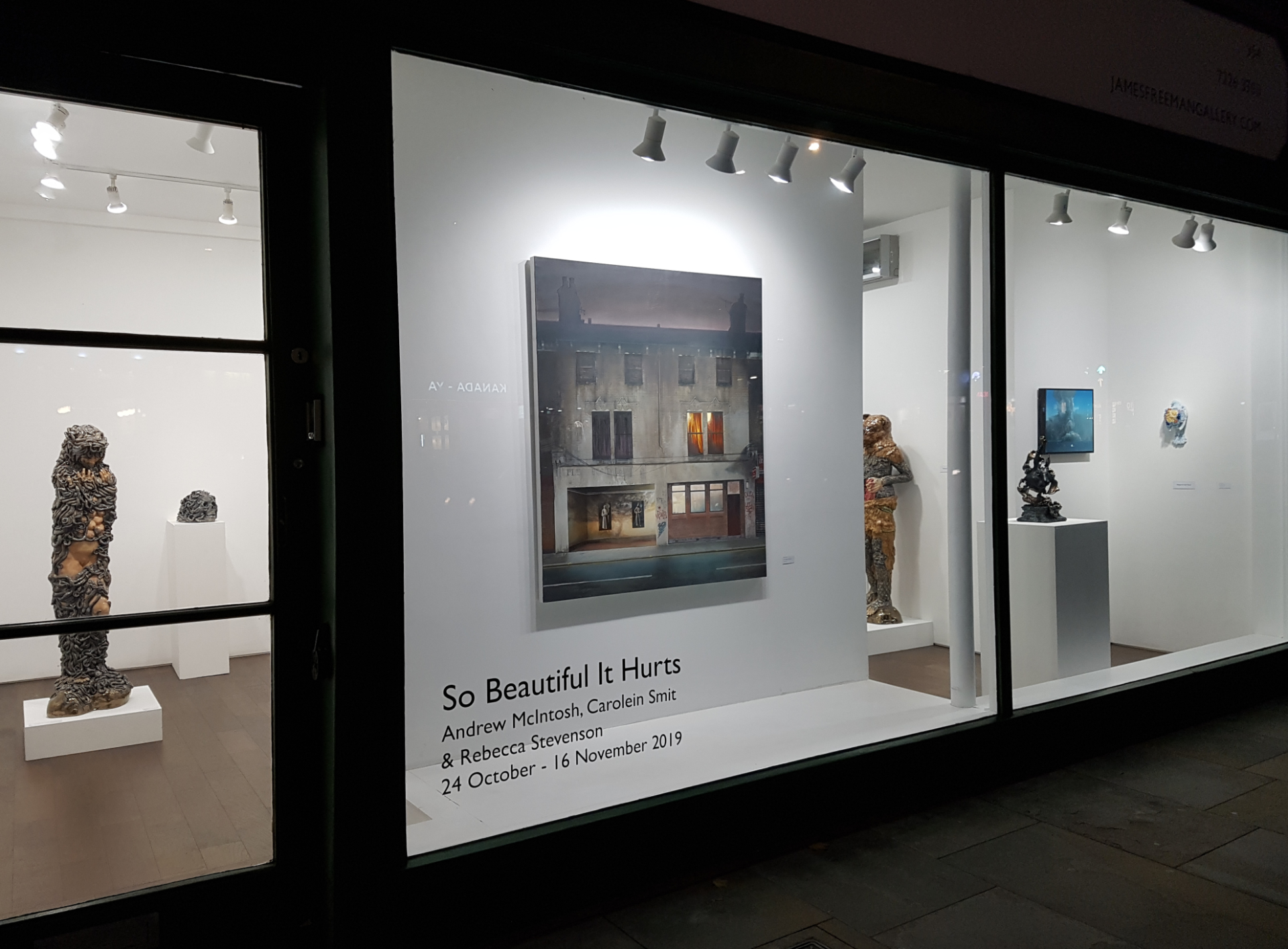
So Beautiful It Hurts
October 2019 at James Freeman Gallery with Carolein Smit and Rebecca Stevenson
Selected Works
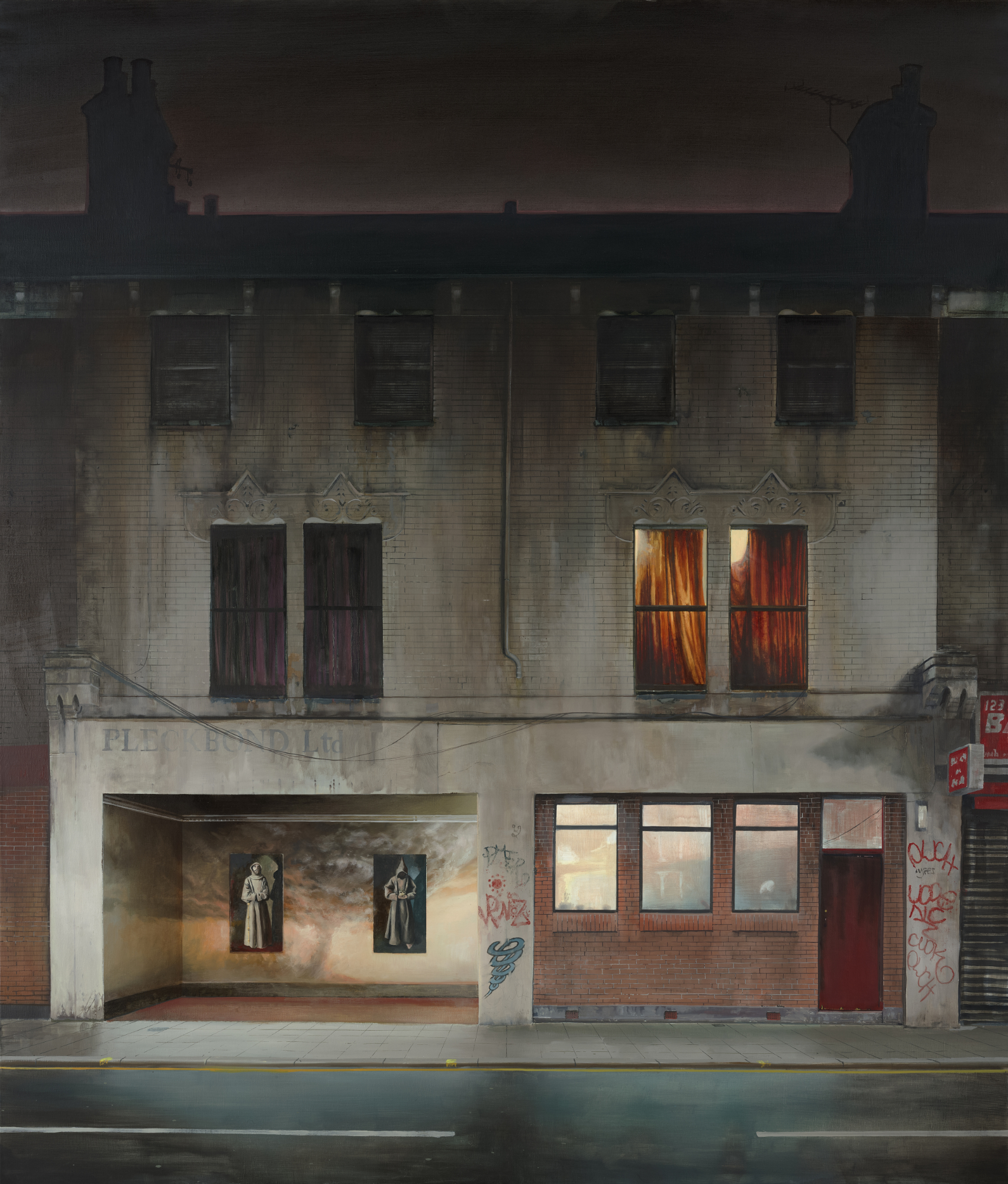
I Am The Enemy Of No Man
oil on linen
120x140cm
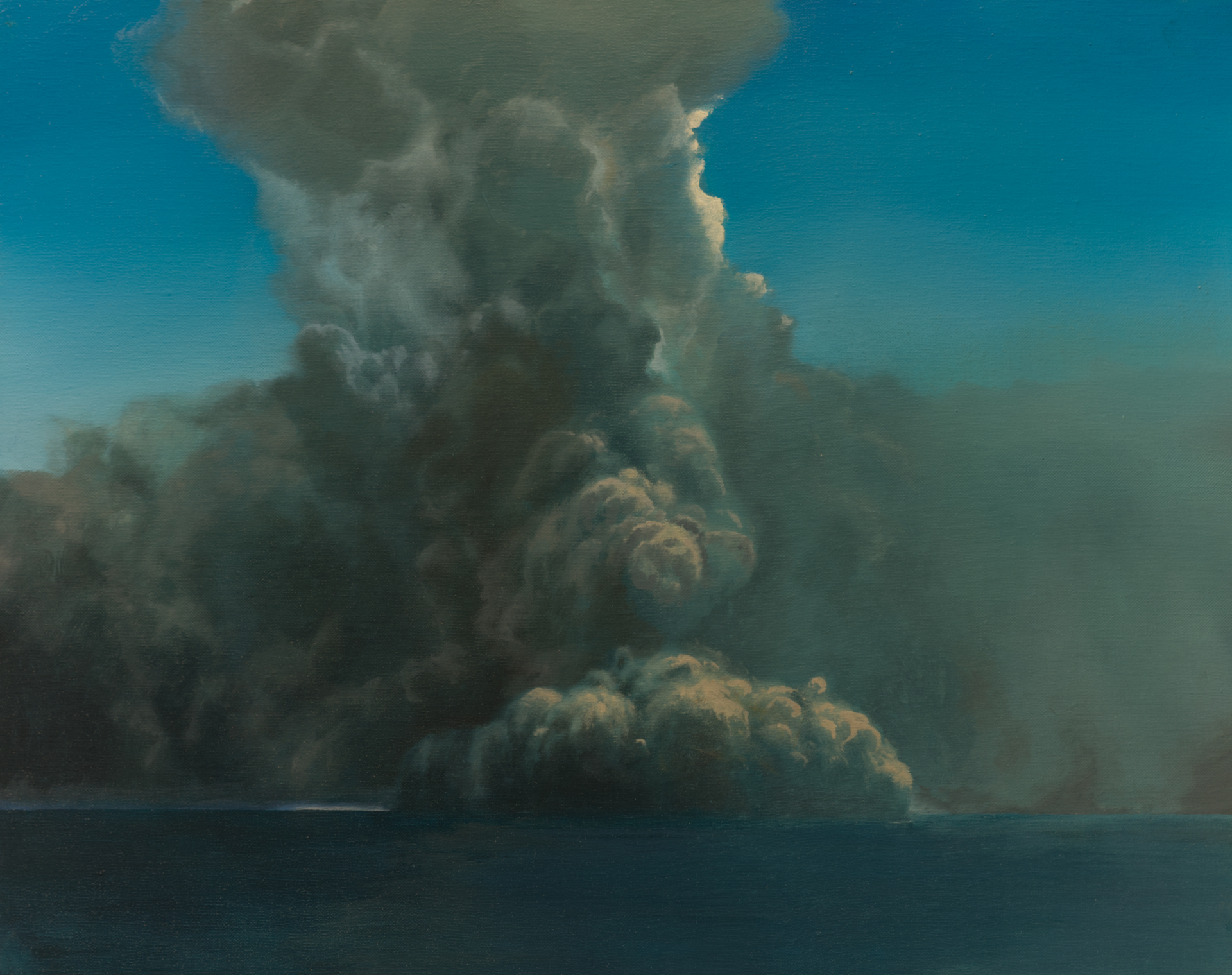
Eruption study
oil on linen
50.5x40.5cm
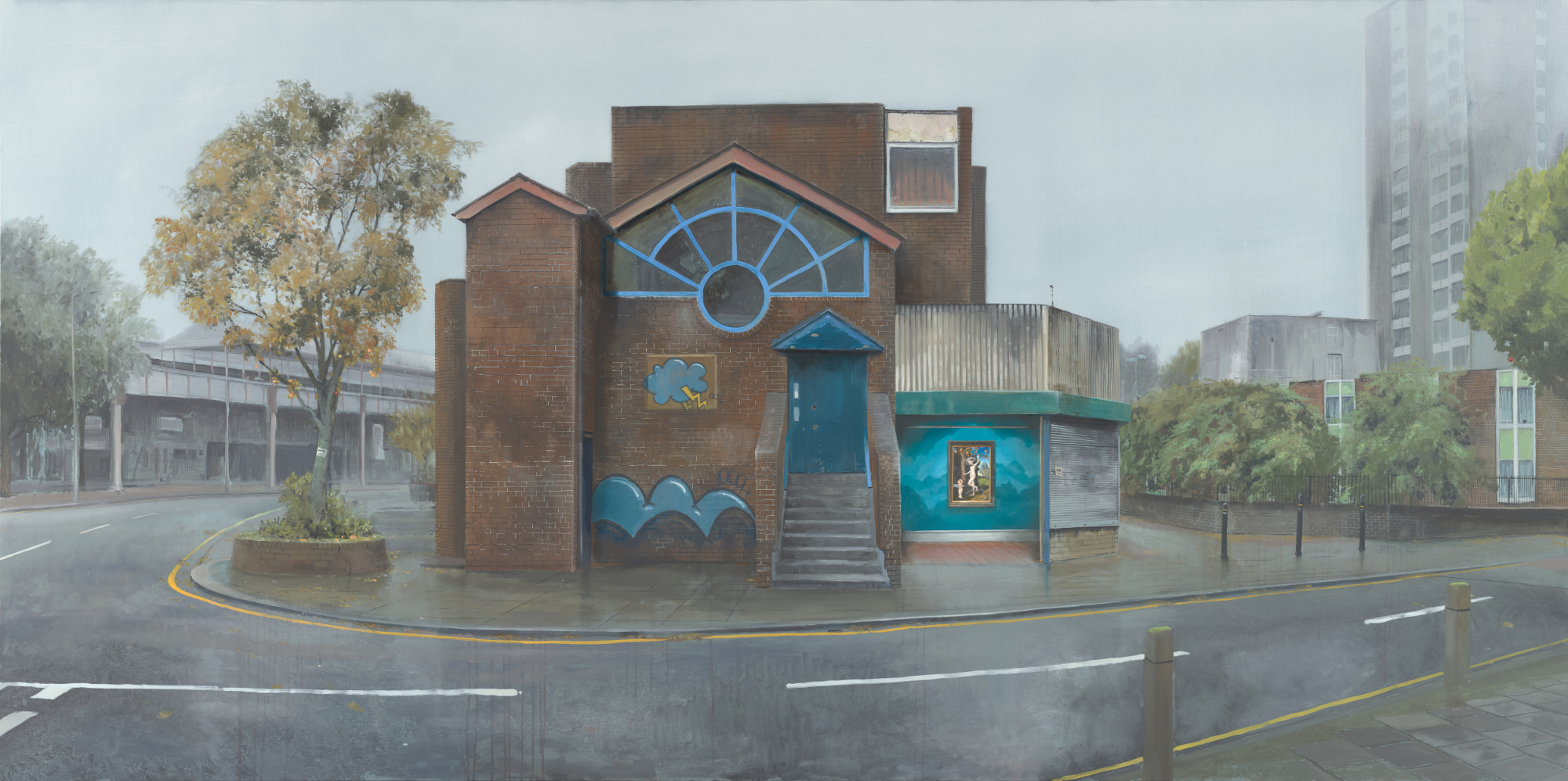
What No One Else Had
oil on linen
200x100cm
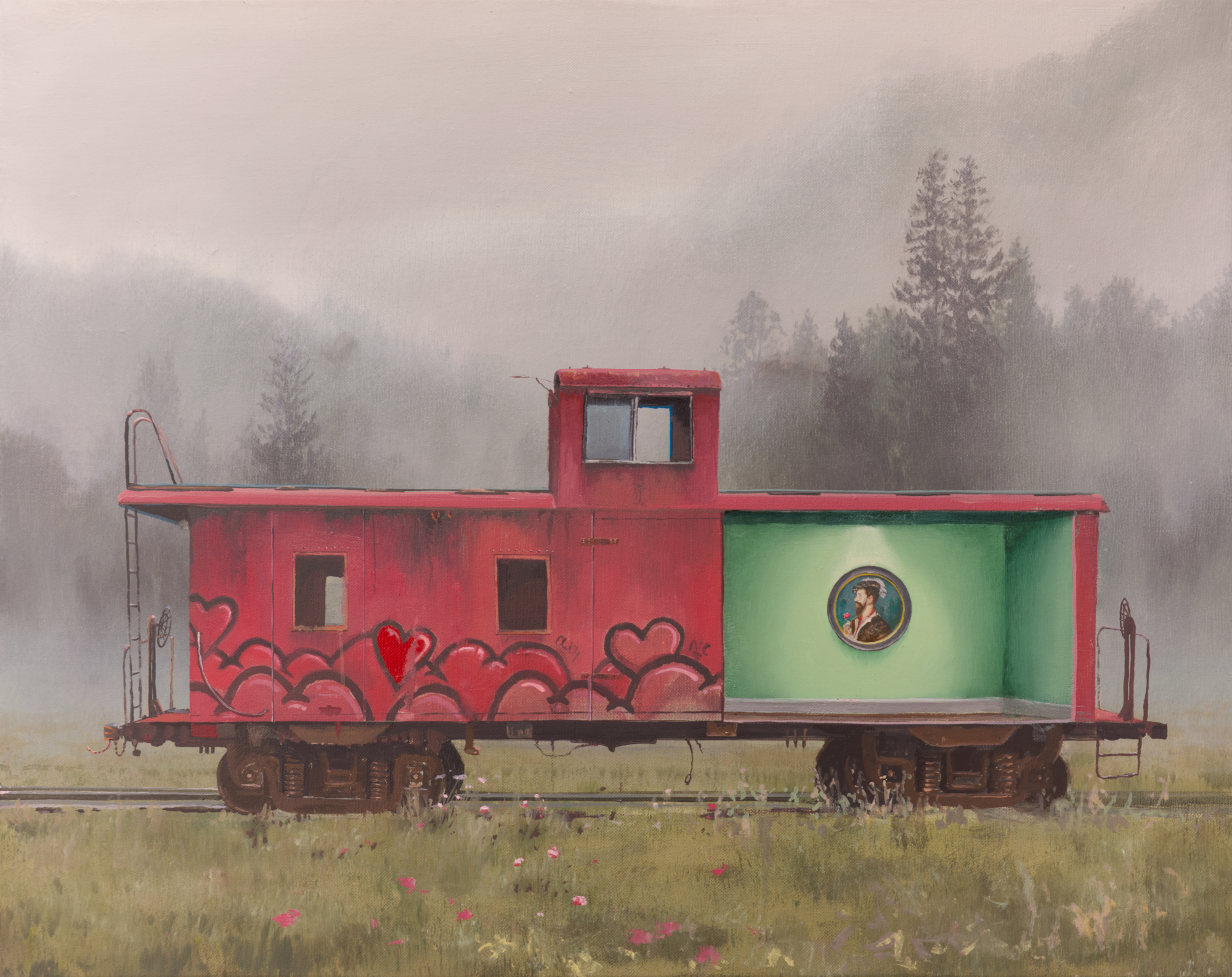
The Amorous Journey
oil on linen
50.5x40.5cm
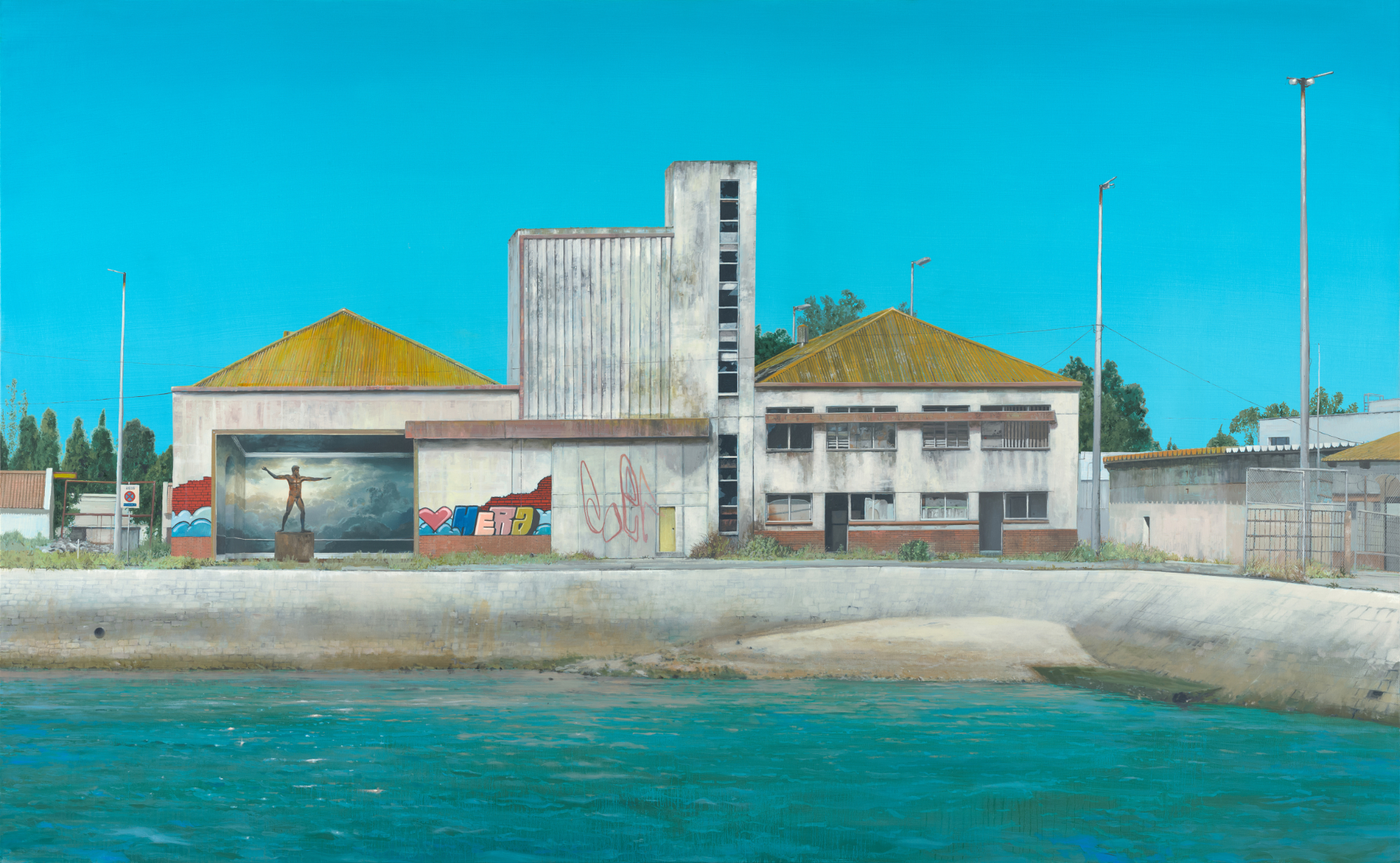
The Last Time That I Can Help You
oil on linen
210x130cm
Exhibition Text
We are pleased to present ‘So Beautiful It Hurts’, an exhibition exploring the boundary between beauty and horror through the work of three contemporary artists: Andrew McIntosh, Carolein Smit, and Rebecca Stevenson.
Andrew McIntosh’s paintings take the motif of the haunted building and embed it with artworks representing humanity’s grandest experiences. Behind a decrepit shopfront, Zurburan’s St Francis in meditation and ecstasy hang against a backdrop of storm clouds; a defunct factory on the Spanish coastline hosts a statue of Poseidon from antiquity, symbolising the awesome wrath of the sea. And in a grubby window of an old block of flats, Cranach’s ‘Venus and Cupid’ hangs dejected, its grand themes of love and faith forgotten and gone to seed. Turbulent cloudscenes hint at the tradition of the Sublime and its view of the grandeur of Nature as terrifying, but in Andrew’s work this is all tempered with the banality of everyday decay. Divine wrath and realism, the awesome and the ordinary: Andrew packs them all together with a surreal and foreboding beauty.
Carolein Smit’s ceramic sculptures roam the depths of myth and folklore to bring its cast of characters into the light. Through looking at timeless archetypes, the nature of the ‘beautiful’ becomes secondary to the resonance of the idea. But her works are beautiful, exquisitely so, in their intricacy and jewel-like finish. In this show is a pair of life-size sculptures referencing Gods and monsters from antiquity – what were once figures of awe and terror. The female echoes the Artemis of Ephesus, one of the principal cults of the ancient world, but converted into a Medusa covered with writhing snakes. The male is a wounded warrior, cloaked in a bearskin as if in an animal spirit, sporting finely-worked armour akin to tattoos that tell the stories of his triumphs. By combining the grotesque with the exquisite Carolein’s sculptures explore how discomfort and amazement can co-exist without contradiction.
Rebecca Stevenson’s sculptures reference the Dutch still-life tradition and painters such as Jan Weenix to explore the macabre potential of beauty. In particular, she extracts specific elements – game, fruit, and flowers – that were intended to provoke reflection on the transience of life, and recreates them with heightened aesthetics and in improbable combinations. Rebecca’s method involves casting her animal sculptures in layers of resin and wax, and then incising them like a surgeon, peeling each layer back to create a cavity to host her cornucopia. In contrast to the sombreness of the 17th century, her wax modelling is lush and bright, the sugarfrost coating almost sickly sweet. In her bronzes she takes the kind of curlicues that were thought to enchant the viewer and prompt awe, and replaces what should be cherubs with the heads of rabbits and game. The result is an investigation of the Baroque obsession with mortality, reinterpreted for the 21st century.
